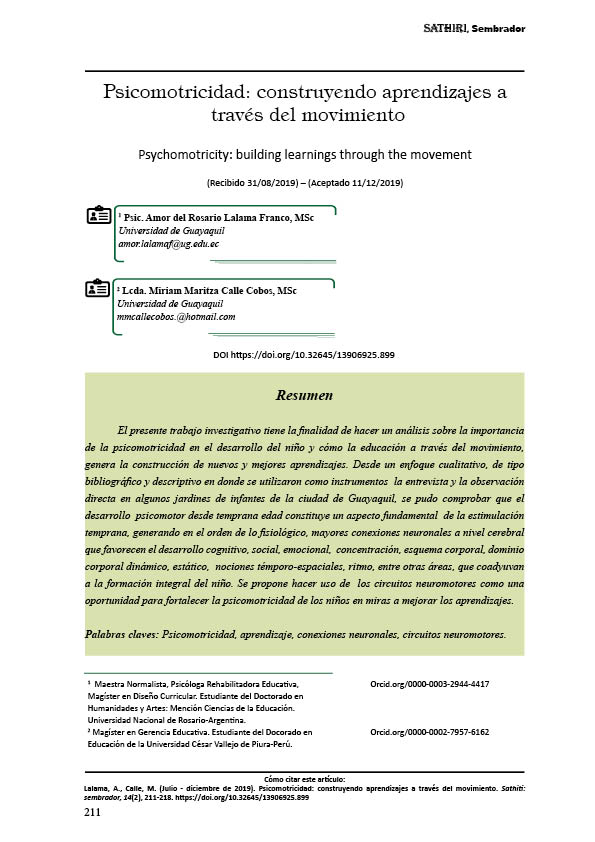Psychomotricity: building learnings through the movement
DOI:
https://doi.org/10.32645/13906925.899Keywords:
Psychomotricity, learning, neuronal connections, neuromotor circuitsAbstract
The present investigative work has the purpose of making an analysis about the importance of psychomotricity in the development of the child and how education through movement generates the construction of new and better learning. From a qualitative, bibliographic and descriptive approach where interviews and direct observation were used as instruments in some kindergartens in the city of Guayaquil, it was found that psychomotor development from an early age is a fundamental aspect of early stimulation, generating in the order of the physiological, greater neuronal connections at the cerebral level that favor the cognitive, social, emotional, concentration, body outline, dynamic body, static, static-spatial notions, rhythm, among other areas, that contribute to the integral formation of the child. It is proposed to use the neuromotor circuits as an opportunity to strengthen the psychomotor skills of children in order to improve learning.

Downloads
Published
Issue
Section
License
Copyright (c) 2019 Amor del Rosario Lalama Franco, Miriam Maritza Calle Cobos

This work is licensed under a Creative Commons Attribution-NonCommercial-NoDerivatives 4.0 International License.
El autor mantiene los derechos morales e intelectuales de su obra, autorizando a la editorial de la revista Sathiri la difusión y divulgación de su contenido con fines estrictamente académicos y de investigación, sin fines de lucro. Así mismo, se autoriza que la obra sea descargada y compartida con otras personas, siempre y cuando no sea alterada y se reconozca su autoria.




















